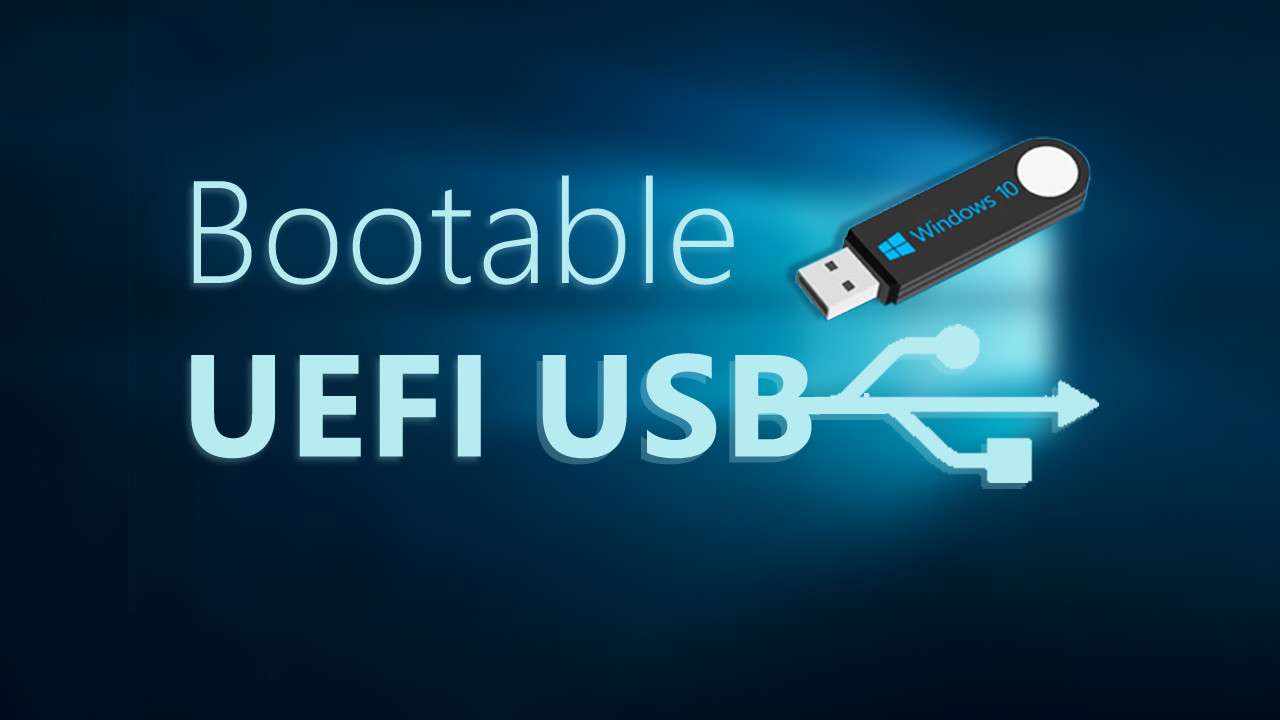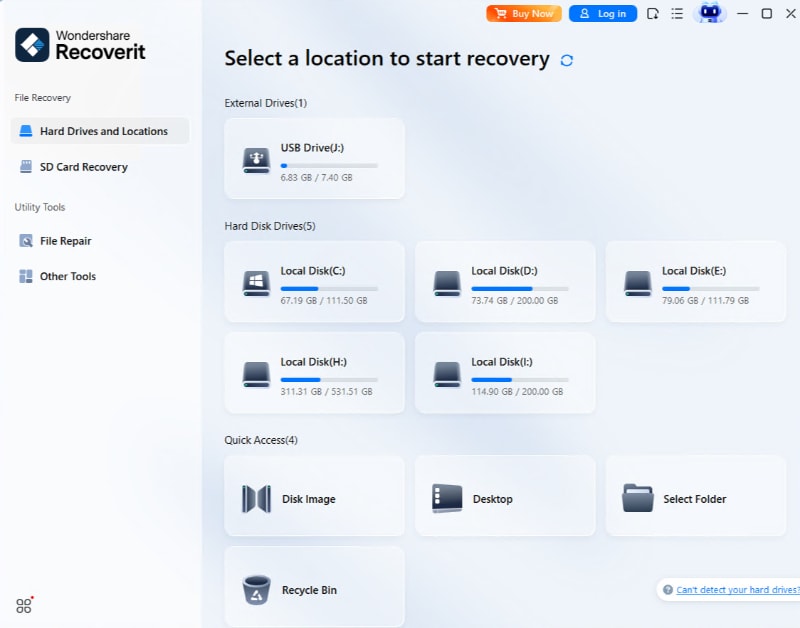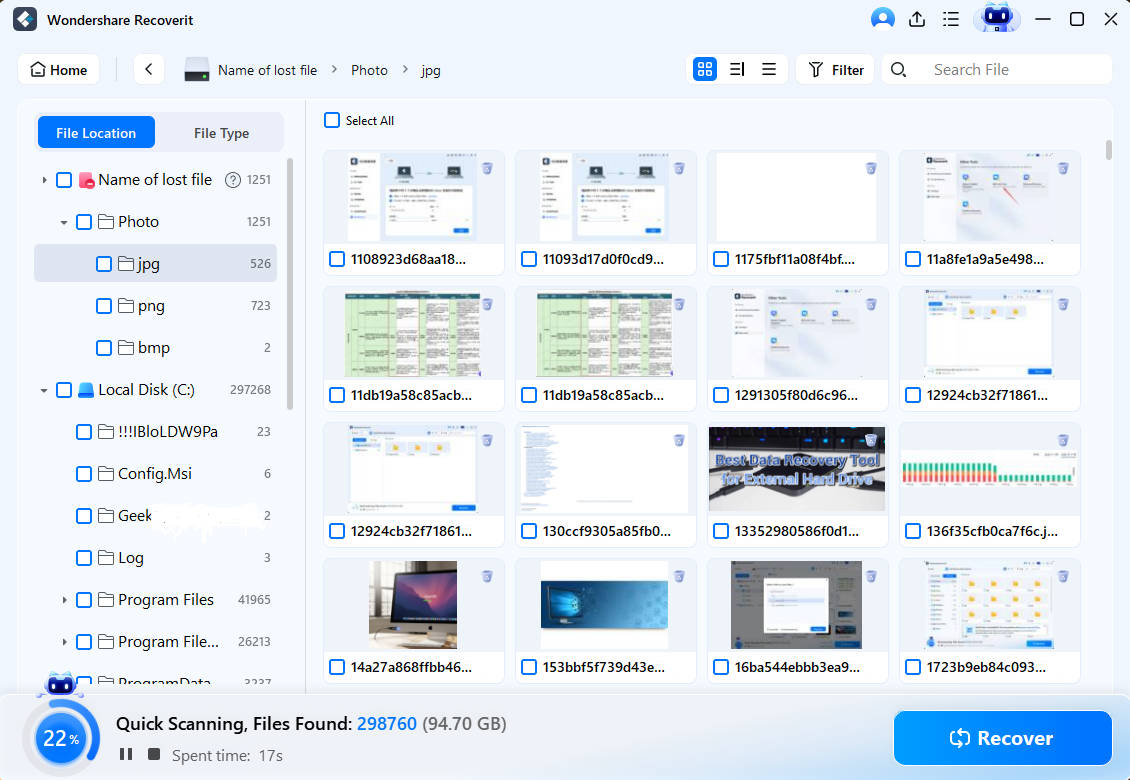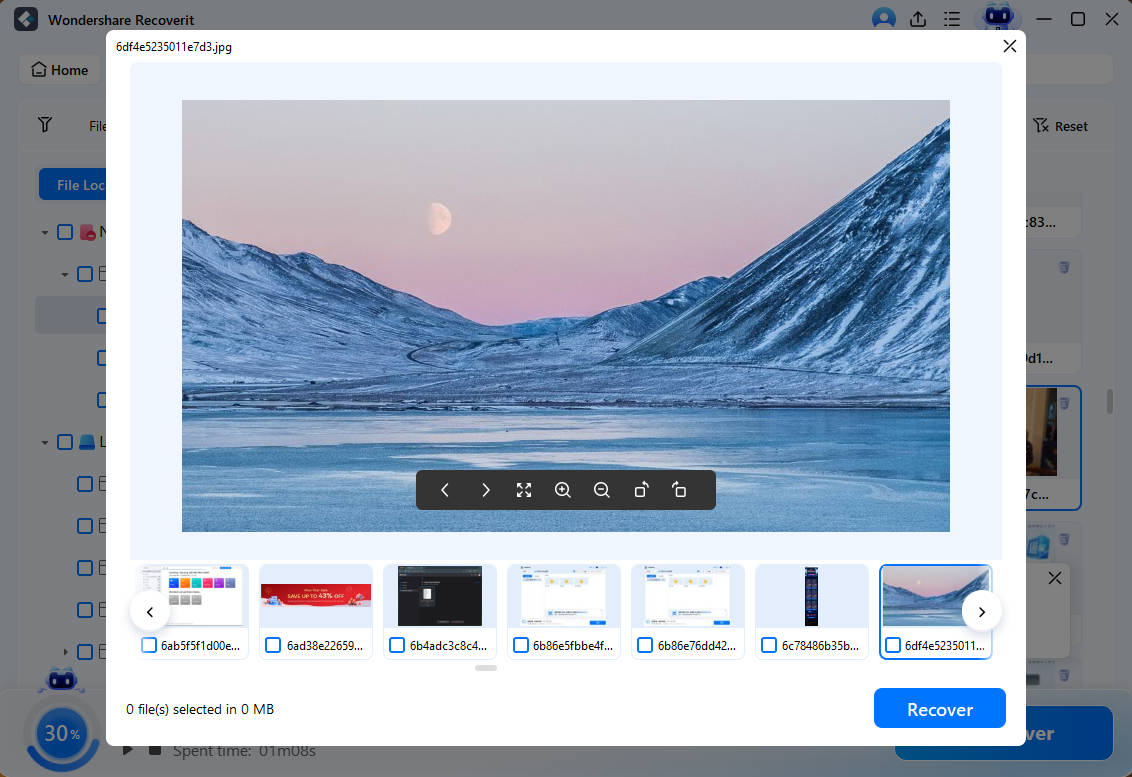If you want to speed up your computer and maximize your experience, you may wonder how to create a UEFI bootable USB. This interface is one of the best options since it provides professional features, customization, and a faster device.
However, you must create a bootable disk to implement this interface on your computer. We will explain this process and present the three most reliable methods to help you make a UEFI computer boot from a USB flash drive. Moreover, backing up data from your PC beforehand is essential, so we’ll show you how.
In this article
What Is a UEFI Bootable USB Drive?

A UEFI bootable USB drive is a storage device for booting a computer to the UEFI initialization. This initialization process is modern, faster, and reliable, allowing you to customize your experience and enjoy numerous professional features. It is better than the BIOS initialization, a default process in most computers.
To incorporate this initialization into your computer, you must create a bootable USB drive to hold the process. This small external device will allow you to boot your PC with UEFI instead of the default BIOS.
Why You Might Need a UEFI Bootable Drive on Windows 11/10
You might opt for booting UEFI bios from USB on your Windows 10 computer for many reasons. The most prevalent include the following:
- ⏲ Boot time – If you choose the UEFI initialization, your computer will boot up faster than it would with the BIOS.
- 🔐 Security – UEFI has something the BIOS doesn’t: Secure Boot. Your computer can only open and use trusted files, protecting you from malware and other threats.
- 💬 User interface – As you may already know, the BIOS doesn’t have a graphical user interface, making it too complex to use. That is not the case with UEFI.
- 📁 Easier management – Since the interface is easier to navigate, you can customize and manage your experience more efficiently.
- 💪 Support – One of the main reasons you might opt for UEFI is that it supports extensive capacities, which isn’t the case with the BIOS.
Of course, numerous other reasons may affect your decision, but these are some of the benefits you will gain from UEFI bios.
Video Tutorial: How to Recover Files From Crashed Computer With Bootable USB Drive?
Top 3 Ways to Create a UEFI Bootable USB on Windows 11/10
Now that you have protected and recovered your data, it’s time to jump into the best ways to create a bootable UEFI USB. We have prepared three reliable and secure methods to help you reach your goal. You can choose your ideal method according to your preferences and needs.
Create a UEFI Bootable USB on Windows 11/10 With Rufus
Rufus is a free, open-source application to help you create bootable USB flash drives. It is only compatible with Windows operating systems, making it perfect for this operation. During the decade of this platform’s work, it has managed to successfully help millions of users, making it one of the most reliable and successful tools on the market.
To create your bootable UEFI USB with Rufus, follow the steps below:
- Download the Rufus utility from the official website.
- Connect the USB flash drive to your computer.
- Open the program and head to the Device section.
- Select your USB drive.
- Choose DISK or ISO image under Boot selection. Click Select to choose the Windows 10 ISO file.
- Click UEFI in the Partition scheme.
- Choose UEFI (non-CSM) as the Target system.
- Select the preferred format type in the File system.
- Click Start to create a bootable USB.

You can find numerous additional settings when creating a bootable USB with Rufus. The guide above is the basic, universal one for making a UEFI USB.
Create a UEFI Bootable USB on Windows 11/10 Using Diskpart
Diskpart is a command in CMD (Command Prompt) to control your drives, disks, and other storage units. You can use it to customize your storage experience, format, delete, reformat, and partition your drives.
This universal command-line utility can also help you create a bootable UEFI USB flash drive, but you must be careful when performing this process.
Here’s what you should do to create a bootable UEFI USB using Diskpart:
- Connect your USB to the computer.
- Search for Command Prompt (or cmd) and click Run as administrator.

- Once you launch the program, type diskpart and press Enter.
- Type the following commands one by one and press Enter after every command:
list disk
select disk(followed by the number of your disk)
clean
create partition primary
select partition(followed by the corresponding number)
active
format fs=fat32
assign - To exit the program, type the exit command and hit Enter.

Now, copy the Windows installation to your USB drive. After pasting the Windows ISO file, remove your USB.
Create a UEFI Bootable USB on Windows 11/10 Using the Media Creation Tool
Given the fact that Diskpart is not beginner-friendly, we recommend another option if you haven’t used it before: Media Creation Tool . As a Microsoft program, it can help you create an installation media using a flash drive. Thus, it’s a perfect utility to boot UEFI bios from USB. It is also one of the most secure options on the market, exclusive to Windows devices.
To create a bootable UEFI USB drive using this tool, download it from the official website and follow the steps below:
- Connect your USB drive to the computer.
- Run Media Creation Tool as administrator and click Accept to agree with the terms and conditions.
- Select DVD, DVD, or ISO file) for another PC and click Next.

- Tick the Use the recommended options for this PC checkbox and hit Next.
- Select USB flash drive and click Next.

- Choose your USB flash drive from the list and hit Next.
- The tool will automatically download the Windows 11/10 installation file. Once the program downloads Windows, click Next to create a bootable USB.
- Once you see the “Your USB flash drive is ready” message, click Finish to complete the process.

This tool might be the most convenient. Creating your bootable flash drive will take only a couple of minutes.
[Bonus]Things To Know Before Making a UEFI Bootable USB
Before using your USB drive to boot your computer in UEFI, you must take care of your data. When you change the initialization process, you may lose the data on your computer. Thus, recovering and backing up the data from your PC is essential to avoid potential issues.
The best way to recover your data is to use a third-party software solution like Wondershare Recoverit. This tool can help you manage your data and retrieve lost or accidentally deleted files. It covers thousands of file types and data loss scenarios, helping you get your data back, no matter the circumstances.
Download Wondershare Recoverit from the official website to start your recovery journey. Follow the guide below to recover data from your Windows 10 computer:
- Launch Recoverit and choose Hard Drives and Locations on the left. Select a location as you want and Click Start to begin the scanning process.

- Recoverit will start an all-around scan automatically. It will take some time but you can see the real-time scanning results on the interface.

- After scanning, you can preview the files. If you find the targeted files, you can click Recover to retrieve your files.

Conclusion
UEFI is one of the best initialization methods for Windows devices. It runs faster than other options, boosting your device’s performance. A bootable USB is necessary to boot Windows 11/10 into UEFI.
We have prepared the most reliable methods for reaching this goal. However, back up your data first to avoid potential data loss scenarios. Wondershare Recoverit is among the best tools for protecting and recovering your valuable data.
FAQ
-
What is a UEFI Boot USB?
A UEFI Boot USB is a flash drive formatted and configured to boot a computer using the UEFI (Unified Extensible Firmware Interface) instead of the traditional BIOS. It supports GPT partitioning and is required for modern systems to install or run operating systems like Windows 10/11 or Linux. -
How do I create a UEFI Bootable USB?
To create a UEFI bootable USB:
1. Use tools like Rufus, Ventoy, or balenaEtcher.
2. Select GPT partitioning (for UEFI) instead of MBR.
3. Format the USB as FAT32 (required for UEFI compatibility).
4. Ensure the OS installation files (ISO) support UEFI. -
Why won’t my USB boot in UEFI mode?
Common reasons include:
USB is formatted as NTFS instead of FAT32.
The ISO file doesn’t support UEFI.
The USB was created in MBR mode instead of GPT.
Secure Boot is enabled (may block unsigned bootloaders). -
Can I convert a Legacy (BIOS) bootable USB to UEFI?
Yes, by reformatting the USB drive: Back up data (this will erase the USB). Use DiskPart or Rufus to switch from MBR to GPT. Reformat as FAT32 and copy UEFI-compatible files. -
What’s the difference between UEFI and Legacy boot modes for USB?
UEFI: Uses GPT partitioning, supports faster boot, Secure Boot, and drives >2TB.
Legacy (BIOS): Uses MBR partitioning, limited to 2TB disks, and older systems. Most modern PCs use UEFI, but some allow switching to Legacy in firmware settings.



 ChatGPT
ChatGPT
 Perplexity
Perplexity
 Google AI Mode
Google AI Mode
 Grok
Grok























